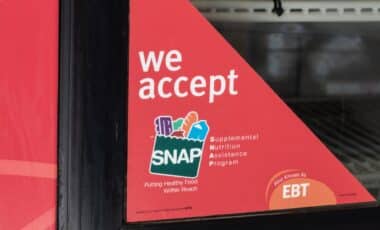A new policy under the Trump administration has resulted in a significant shift for over one million Social Security beneficiaries, with monthly payments set to be garnished by up to 50% due to overpayment recovery.
For millions of Americans relying on Social Security as their primary source of income, this policy change threatens their financial stability. However, there are legal avenues available to reduce or avoid these garnishments.
For retirees, survivors, and individuals with disabilities, Social Security benefits are crucial to covering daily expenses. According to Gallup‘s annual surveys, between 80% and 90% of retirees depend on their monthly checks to make ends meet.
The sudden shift in garnishment rules, with beneficiaries facing up to half of their payments being withheld, has raised alarms, especially at a time when many are already struggling to cope with rising living costs. Understanding how to navigate this situation is essential for those affected.
The Trump Administration’s Overpayment Recovery Policy
The Trump administration’s new approach to Social Security garnishments significantly impacts beneficiaries who have been overpaid in the past.
Prior to this, the Biden administration had reduced the garnishment rate for overpayments to just 10% per check. However, the Trump-era policy has reinstated a much higher recovery rate, with 50% of monthly benefits now at risk.
The Social Security Administration (SSA) identified that over a million beneficiaries received too much in benefits due to administrative errors or unreported income changes. According to SSA officials, over 980,000 people are still making good on their overpayments as of fiscal 2023.
This situation is compounded by the ongoing 15% garnishment for federal student loan borrowers aged 62 and above, which further strains the finances of older Americans. With a growing number of beneficiaries facing these significant deductions, many are exploring ways to mitigate or avoid the garnishment.
Available Legal Options for Affected Beneficiaries
Beneficiaries facing garnishment for overpayments have several legal options available to reduce the amount they must repay.
The most effective route is to request a waiver (Form SSA-632BK) if the overpayment was not their fault, or if repaying it would cause financial hardship. This waiver process requires documentation of income and expenses, but it provides a potential solution for those who cannot afford to repay the full amount.
Another option is to file a Request for Reconsideration (Form SSA-561) if a beneficiary disagrees with the SSA’s assessment of their overpayment. This appeals process can either reduce the amount to be repaid or eliminate it entirely, depending on the circumstances.
Lastly, beneficiaries may also negotiate a more manageable repayment plan by filing a Request for Change in Overpayment Recovery Rate (Form SSA-634). This could extend the repayment period and lessen the monthly burden, providing crucial financial relief during difficult times.










hi